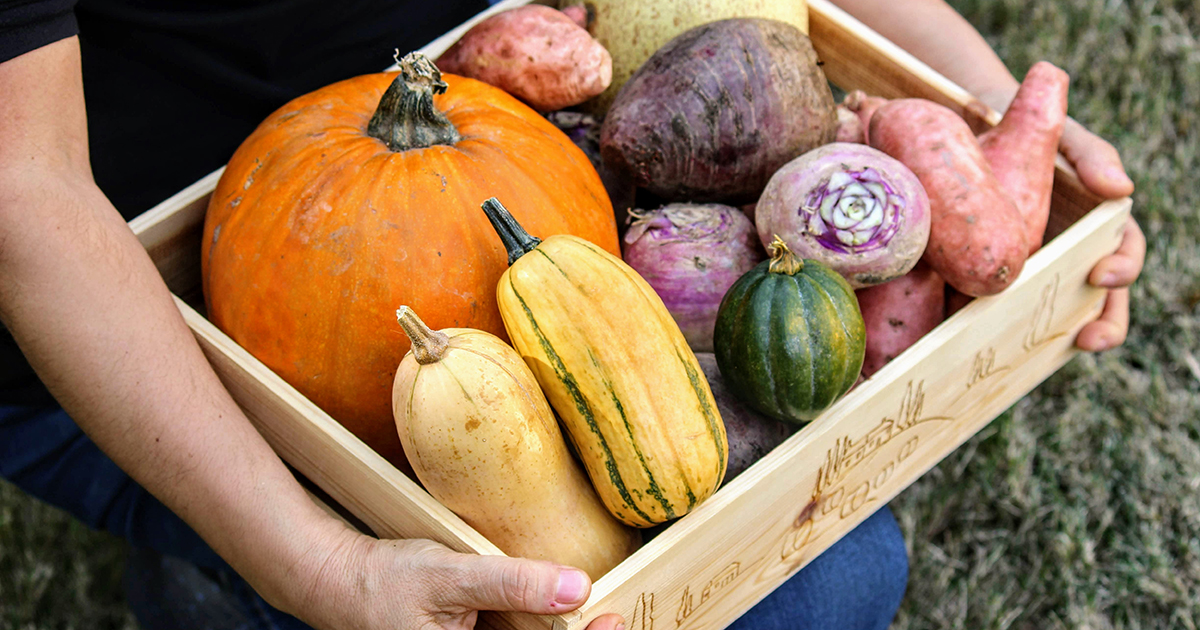
Savor the season: Fall into fresh produce
As the leaves are turning various colors and the weather cools off, turn up the “beet” by trying some new recipes that feature fresh fall produce!
Beets
Beets are root vegetables that can be easily transformed into many different things, such as drinks, desserts, salads, appetizers and more. They’re low in calories and contain potassium and fiber as well as betalain compounds.
Why they’re good for you:
- Potassium functions as an electrolyte in the body and is used for managing a variety of processes, including fluid balance, nerve signals and muscle contractions.
- Fiber can help you control blood sugar levels, maintain a healthy weight, lower your cholesterol and stay regular. Aim for 25-38 grams a day.
- Betalains are a type of natural plant pigment that have antioxidant and anti-inflammatory properties. These pigments protect your cells from damage and may even lower the risk of certain diseases, such as heart disease and cancer.
For a sweet and beneficial treat, try this recipe for Sweet Nectarine and Roasted Beet Salad.
Sweet potatoes
True to their name, sweet potatoes have a naturally sweet flavor that can be further enhanced through various cooking methods, such as roasting or steaming. Orange-fleshed sweet potatoes are a top source of beta-carotene, and sweet potatoes with purple flesh are rich in anthocyanins. Both beta-carotene and anthocyanins are types of phytochemicals, which are chemicals produced by plants that can benefit your health.
Why they’re good for you:
- Eating phytochemicals from fruits and vegetables may help reduce your risk of heart disease and cancer. They can also help boost your immune system and reduce inflammation.
- You can even eat the sweet potato skin for an added boost of fiber. Just make sure you clean and scrub the skin to remove any debris before cooking.
Check out these easy, fun and healthy recipes for Sweet Potato Hash and Sweet Potato and Black Bean Quesadilla.
Pumpkin
Pumpkins can be broken down into two parts: the flesh and the seeds. Pumpkin flesh is low in calories, rich in fiber and beta-carotene, and is a great source of potassium. The seeds are high in protein, fiber and several minerals, such as iron.
Why they’re good for you:
- The protein and fiber in pumpkin seeds helps keep you feeling full, which makes them a great snack.
- Iron is a mineral that is essential for blood health.
Ready to start eating seasonally?
Get more fall recipes
Stay nice and cozy with a warm bowl of Pumpkin Chili or try Savory Pumpkin Breakfast Bake from the OSF recipes.
Note: These pumpkin recipes call for “pure pumpkin,” which can be purchased canned and should not be confused with canned pumpkin pie mix. You can also use fresh pumpkin. To prepare fresh pumpkin, just drizzle cubes or wedges with olive oil, season with salt and pepper, and roast in the oven for about 25 minutes at 400 degrees. Then puree in a blender or food processor.
“Beets, sweet potatoes and pumpkins are just a sampling of the seasonal produce options that are available across the United States in the fall,” said Ashley Simper, a registered dietitian at OSF HealthCare. “It’s important to remember that fresh seasonal produce contains more nutrients than out-of-season options, and it also tastes better. So, be sure to visit your local supermarkets and farmers markets to see what’s available in your area.”